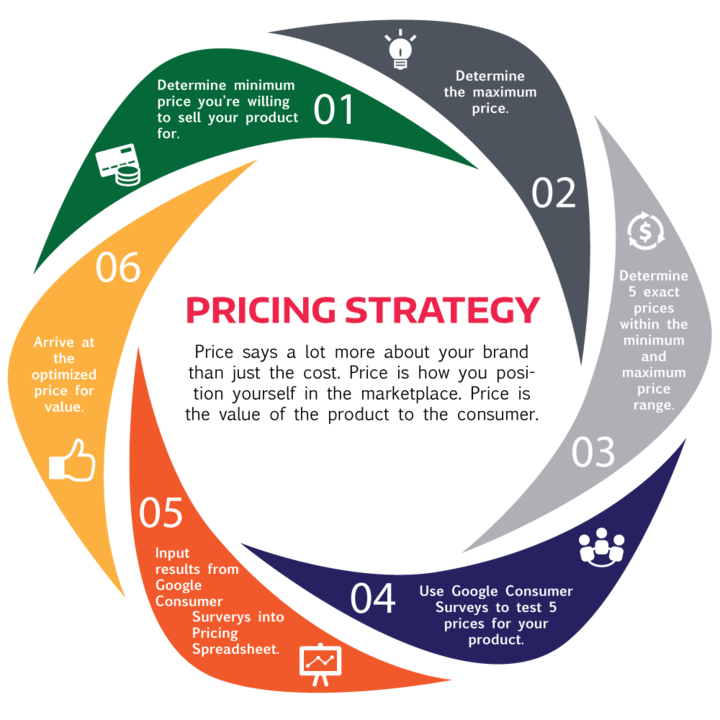How to Adjust Your Pricing Strategy for Different Market Segments
How to Adjust Your Pricing Strategy for Different Market Segments
Blog Article

Master Effective Prices Strategies to Take Full Advantage Of Earnings
In the ever-evolving landscape of commerce, grasping reliable rates methods is important for businesses aiming to make best use of earnings. A nuanced understanding of prices psychology can significantly influence client actions and getting decisions.
Understanding Prices Psychology
Recognizing pricing psychology is critical for organizations aiming to optimize their rates techniques. This area takes a look at how consumers perceive costs and how these assumptions affect their investing in decisions. Key concepts in rates psychology include the anchoring effect, where the preliminary cost offered functions as a reference point for customers, and the principle of cost level of sensitivity, which varies among various client segments.
In addition, services can take advantage of the idea of perceived value, where the viewed advantages of a product and services can validate a higher price factor. Premium rates can produce an aura of exclusivity, bring in consumers who connect higher costs with premium high quality. On the various other hand, emotional prices, such as establishing a cost at $9.99 rather of $10, can substantially influence consumer habits by making prices appear more appealing.
Moreover, shortage and seriousness can boost the perceived worth of products, prompting quicker purchasing choices. Understanding these mental triggers makes it possible for services to formulate rates strategies that not only drive sales however also foster client commitment. Hence, grasping prices psychology is important for reliable pricing strategy formula, bring about boosted productivity and market positioning.
Executing Value-Based Pricing

First, conduct comprehensive market research study to determine the worth drivers for your target audience. This can include attributes, top quality, brand name track record, and customer service. Next, segment your customers based upon their determination to pay and the worth they perceive. By doing so, you can customize offerings and rates techniques to line up with different sectors.
Continually check market problems and client feedback to improve your pricing approach over time. By implementing value-based rates, companies can improve earnings while cultivating long-lasting client loyalty.
Discovering Dynamic Pricing Designs
In today's quickly altering market landscape, dynamic rates designs have actually become an effective approach for organizations seeking to maximize income and respond to changes popular. These models enable companies to change their rates in real-time based upon numerous aspects such as customer habits, market trends, and inventory levels. By leveraging information analytics and algorithms, services can recognize ideal pricing factors that optimize sales while continuing to be competitive.
Dynamic rates can take different kinds, including time-based prices, where rates change based on time of day or season, and demand-based pricing, which changes costs according to current consumer demand. This flexibility not just improves profitability however also enhances customer satisfaction by offering prices that reflect real-time market problems.
Implementing vibrant prices calls for a durable technological infrastructure and a deep understanding of client sections. Clear communication about rates changes can aid alleviate customer discontentment and foster depend on, eventually leading to continual profitability in a competitive industry.
Studying Rival Prices
Keeping an eye on rival prices is necessary for businesses intending to maintain an one-upmanship in their respective markets. By analyzing competitors' pricing methods, business can identify market fads, recognize consumer choices, and adjust their read the article rates accordingly. This evaluation entails gathering information on competitors' prices, promotional approaches, and product offerings to inform prices decisions.
To properly evaluate competitor pricing, organizations must use numerous devices and methods, such as price monitoring software, market research study reports, and client comments. This data can reveal exactly how rivals position their product or services, permitting businesses to distinguish their offerings or take on comparable methods to continue to be relevant.
In addition, it is important to classify competitors into indirect and straight rivals. Straight rivals use comparable services or products, while indirect competitors may accomplish the very same customer need with different remedies. Understanding the nuances between these groups will allow organizations to tailor their prices methods more properly.
Ultimately, recurring rival prices evaluation is essential for making educated rates decisions. It permits services to remain nimble in action to market shifts, ensuring they can take chances and reduce risks related to rates techniques.
Examining Rates Efficiency
Recognizing exactly how rival rates affects market dynamics causes an all-natural concentrate on evaluating pricing efficiency within one's own company. This examination is crucial for identifying locations of toughness and chances for enhancement, eventually boosting success.
Furthermore, carrying out routine rates audits can reveal disparities in between anticipated and actual efficiency. This involves comparing rates data throughout different sectors and channels to comprehend differences and recognize fads. Additionally, incorporating consumer responses can provide insights into perceived worth versus real prices, making certain positioning with market expectations.
Lastly, leveraging data analytics tools can assist in deeper understandings into pricing performance, making it possible for companies to make data-driven changes (Pricing Strategy). By constantly examining pricing performance, companies can adapt to market i loved this modifications and optimize their techniques, making certain continual earnings in a competitive landscape
Verdict
By leveraging prices psychology, companies can boost regarded value and tailor pricing to diverse consumer segments. The adoption of dynamic and value-based prices designs assists in real-time modifications based on need and consumer desire to pay.
Recognizing pricing psychology is essential for services aiming to enhance their pricing strategies. Comprehending these emotional triggers allows services to develop rates methods that not only drive sales yet also foster client loyalty. Therefore, mastering pricing psychology is crucial for reliable prices technique formula, leading to boosted earnings and market positioning.
By evaluating rivals' rates techniques, firms can identify market patterns, recognize customer preferences, and change their rates as necessary. By leveraging rates psychology, services can enhance viewed worth and tailor pricing to diverse customer sections.
Report this page